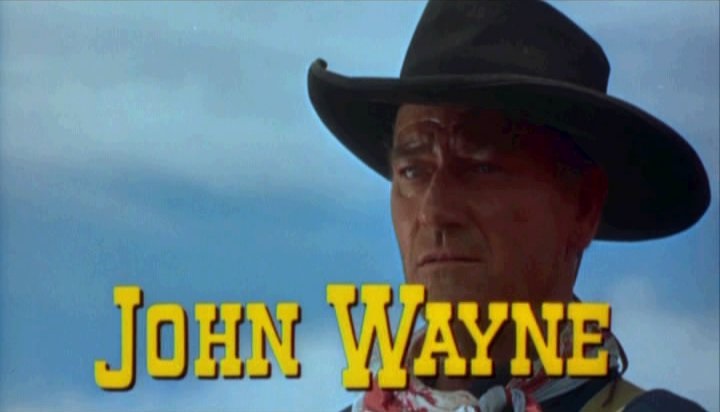- Opinion
- 6 de November de 2024
- No Comment
- 6 minutes read
John Wayne

John Wayne


Last summer, with the temperature reaching 42 degrees Celsius, it was utterly impossible to go for a walk, and even taking the dog out became a hazardous endeavour. So, I ended up watching quite a bit of cinema. One of the films that caught my attention was Dark Command (1940), starring a young John Wayne, directed by one of those legendary figures who have somewhat faded from collective memory—Raoul Walsh. Like John Ford, he sported an eye patch and was often portrayed with a stern expression. He also directed another excellent film, High Sierra (1941), a splendid crime drama featuring Humphrey Bogart and Ida Lupino, as well as the classic They Died with Their Boots On (1941), starring Errol Flynn and Olivia de Havilland.
In Dark Command, an unresolvable rivalry unfolds between a good-natured, towering Texas cowboy (John Wayne) and a pretentious, Nietzschean schoolteacher (Walter Pidgeon). Both are candidates for the position of town marshal in the small city of Lawrence, Kansas, and both vie for the same woman’s affection. Mr. Cantrell, fed up with bookish culture and study, yearns to become someone of importance and thirsts for blood. In contrast, the hero, Bob Seton, simply wants to return to his ranch in Texas with a beautiful woman and focus on his cattle. He is a pure, straightforward soul, unblemished and unwavering.
But dark times loom as the Civil War approaches: Cantrell, the schoolteacher, raises a bloodthirsty gang of outlaws and steals Confederate uniforms, becoming a local warlord who pillages and murders. Meanwhile, John Wayne’s character, who secures the role of marshal, becomes the feeble defender of the law, doing his best despite being unable to read. He is an embodiment of virtue—a man of action, a paternalistic figure. Brave, noble, daring, generous, romantic—who wouldn’t fall in love with such a simple, honest, and likeable fool? Cantrell, on the other hand, is a “teacher-saurus”: a renegade, depressive, treasonous, impulsive, pretentious, sadistic, and vile. A friend of dungeons and prisons, he never acts openly, always hiding behind a façade. He is a deceiver and a tortured soul, corrupted by excessive reading. There is little need to guess who ultimately triumphs in this film, filled with innocence and thrilling chases.
It strikes me that Bob Seton, John Wayne’s “sheriff” character, can be likened to Spain’s LOMLOE education law: a paragon of virtues, acting as a moral policeman for the good governance of society. He is a Rousseauian “noble savage” in a Texan guise, trusting in the inherent goodness of human nature rather than in inconvenient laws, promising a paradise of political harmony on Earth. In reality, this is an old Calvinist myth: salvation comes through faith, the key is to believe, to persevere, and to keep fighting for a return to the Texan ranch, the Promised Land, where human equity prevails because honest work rewards everyone.
However, real life is rarely that simple. Appeals to good customs and passive conformity to the traditions of the pre-modern labourer, obedient and family-oriented, only lead to a self-colonised collective space in today’s world. No one seems particularly keen to discuss bureaucratic discipline, actual inequality, or deliberately constructed geographic ghettos. By 1870, even in America, it was clear that if you wanted trains to run on time or to transport large quantities of iron to Boston, Philadelphia, or New York for the construction of the first steel-framed skyscrapers, you needed serious universities, efficient personnel, a decent administration, and some kind of opportunity for the most dynamic segments of the population.
The real challenge is not reducing education to a laughable moral recipe, but rather designing strategic plans for the next thirty years, organising viable political channels, and ensuring the flow of useful, civilising information. The difficulty lies in building a liveable country, consolidating public institutions, protecting them from rampant pillage, raising the average scientific and cultural level of the population, and demanding concrete policies rather than continuous clashes over abstract problems that only lead to hysteria and unreality. These challenges are far more complex, and the new, shiny “Marshal” of Lawrence, Kansas, would have been utterly bewildered by an economic development plan or a project for a technology campus on the arid prairies the settlers were struggling to cultivate with little success. Drawing up irrigation plans, organising archives, mapping the area, rescuing minority children from the orphanages of death, teaching literature and philosophy—such ambitions were beyond the scope of men who put all their trust in rifles and gonads.
It wasn’t worth racking your pains, really. So, let’s keep dreaming about seeing the Rockies without bothering to think about how to fix the concrete problems facing our young people. All for the Youth, but without the Youth! Let’s not let things get out of control…
Source: educational EVIDENCE
Rights: Creative Commons

